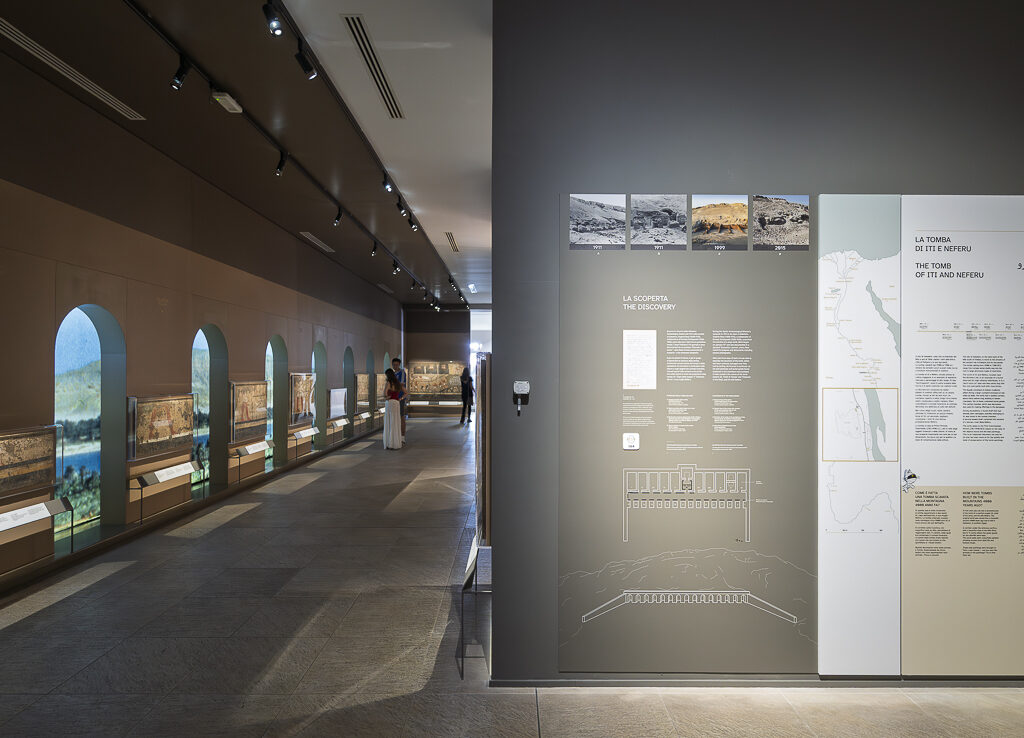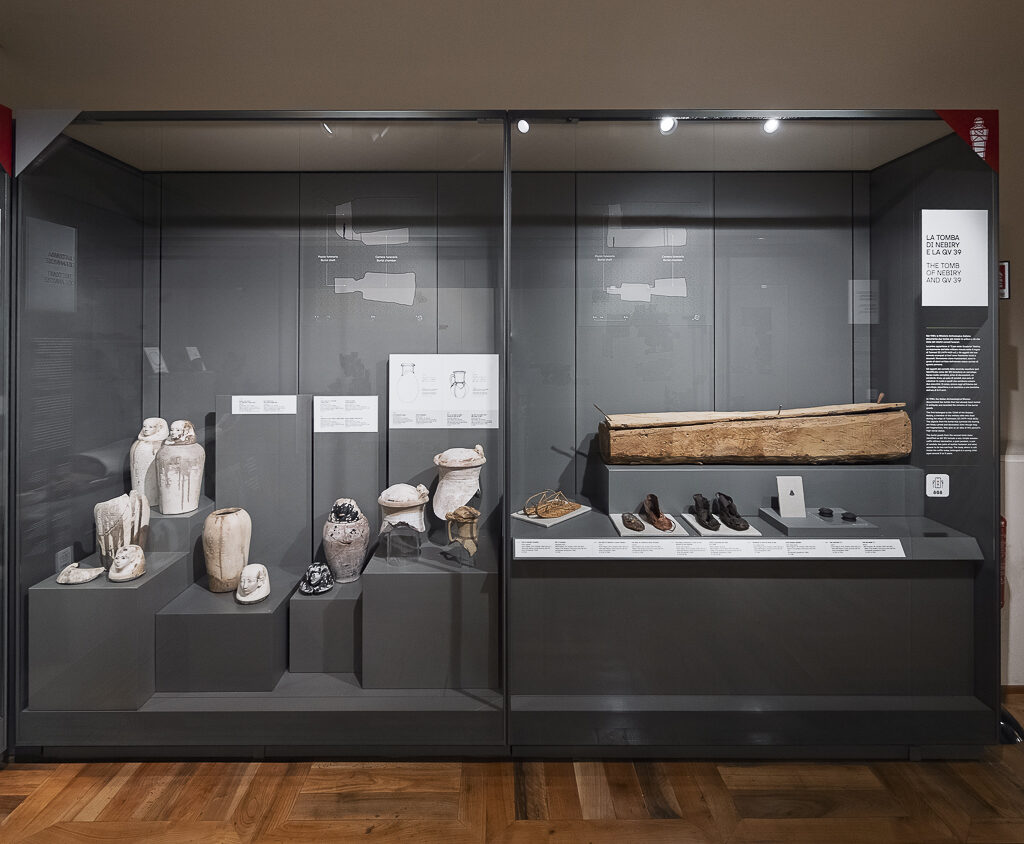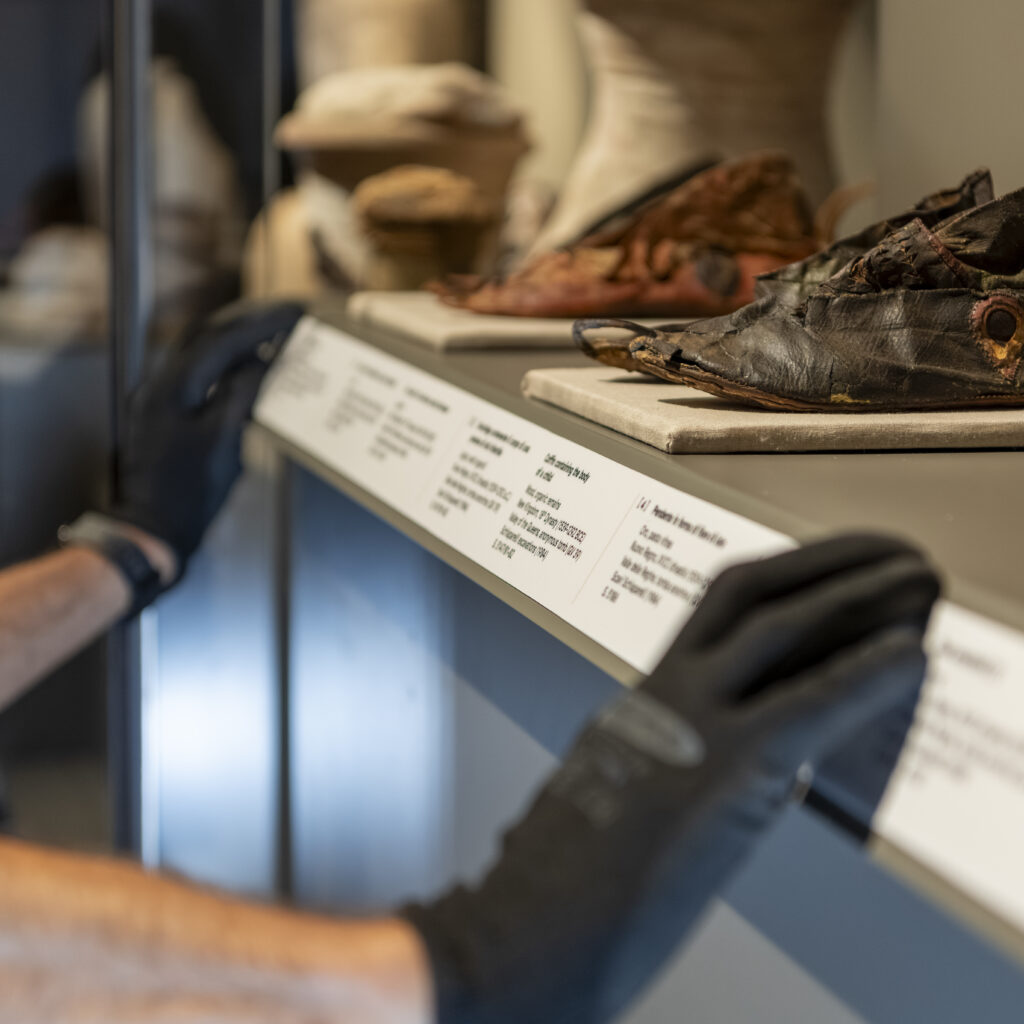Starting today, July 8, 2025, visitors can explore the newly redesigned gallery dedicated to Iti and Neferu, as well as the small room devoted to Princess Ahmose, thanks to the important research and curatorial work carried out by Beppe Moiso, Enrico Ferraris, and Cinzia Soddu, and the exhibition design by Enrico Barbero and Piera Luisolo.
There are two major new features in the reinstallation: the rediscovery of a painting belonging to the decorative cycle of the tomb of Iti and Neferu, found in the storerooms of the Museo di Antropologia ed Etnografia dell’Università di Torino during an inventory check, and the leather sandals of Princess Ahmose, dating back to the 18th Dynasty, now on public display for the first time following a delicate restoration process.

The gallery dedicated to the reconstruction of the tomb of Iti and Neferu has been architecturally redesigned based on a series of studies on the tomb’s structure, its 14 pillars, comparisons with other tombs from the same period, and photographs taken by Schiaparelli himself.
Of the 36 paintings originally removed from the tomb and brought to Turin in 1924, 29 were displayed in the museum after a long restoration in Florence. One of the 7 missing pieces recently resurfaced in the storerooms of the Museo di Antropologia ed Etnografia dell’Università di Torino and is currently undergoing careful restoration, while the others—now lost—are only known through archival photographs. However, the entire collection of paintings can be viewed in the Museo Egizio’s online historical photographic archive.
The new setup of the tomb of Iti and Neferu is not just an exhibition update; it also serves as a way to return a fundamental chapter of the Museum’s and Italian archaeology’s history to the public, linked to the 1911 excavation campaign at Gebelein, led by Virginio Rosa, a young chemist and botanist on his way to becoming an Egyptologist.

The room dedicated to Princess Ahmose, next to that of Nefertari, has been reinstalled following a narrative approach that emphasizes the role of the archaeologist and the importance of archival documentation and conservation science.
The narrative core centers on objects recovered from the storerooms: the leather sandals of the princess—restored by Francesca Gaia Maiocchi and Giulia Pallottini, the Museum’s conservators—and a fragment of fabric that once held the princess’s jewelry. The interpretation of these fragmentary objects is supported by reconstructive drawings by curator Paolo Marini, making otherwise hard-to-read artifacts more accessible and illustrating for the public the process of archaeological reconstruction and interpretation.
The display of human remains has long been a subject of careful reflection at the Museum, which has approached the issue with particular sensitivity over the past ten years. In the case of the reinstallation of Ahmose’s remains, the Museum has chosen an innovative and respectful solution that ensures optimal preservation and a dignified presentation of the artifact.
The display cases dedicated to Ahmose, Nebiry, and the tomb known as Queens’ Valley 39 include the tombs’ origins indicated on a map of the Valley of the Queens, providing unity and context to Schiaparelli’s excavations in that area. The narrative unfolds through new texts, graphic elements, and visual reconstructions that help visitors understand the characteristics of these burials.
The fragmentary nature of some objects is turned into an opportunity for detailed storytelling, offering the public an intimate and informed view of the archaeologist’s work, the importance of conservation, and the Museum’s ability to renew itself through research.

Click HERE to book your ticket and visit the galleries.